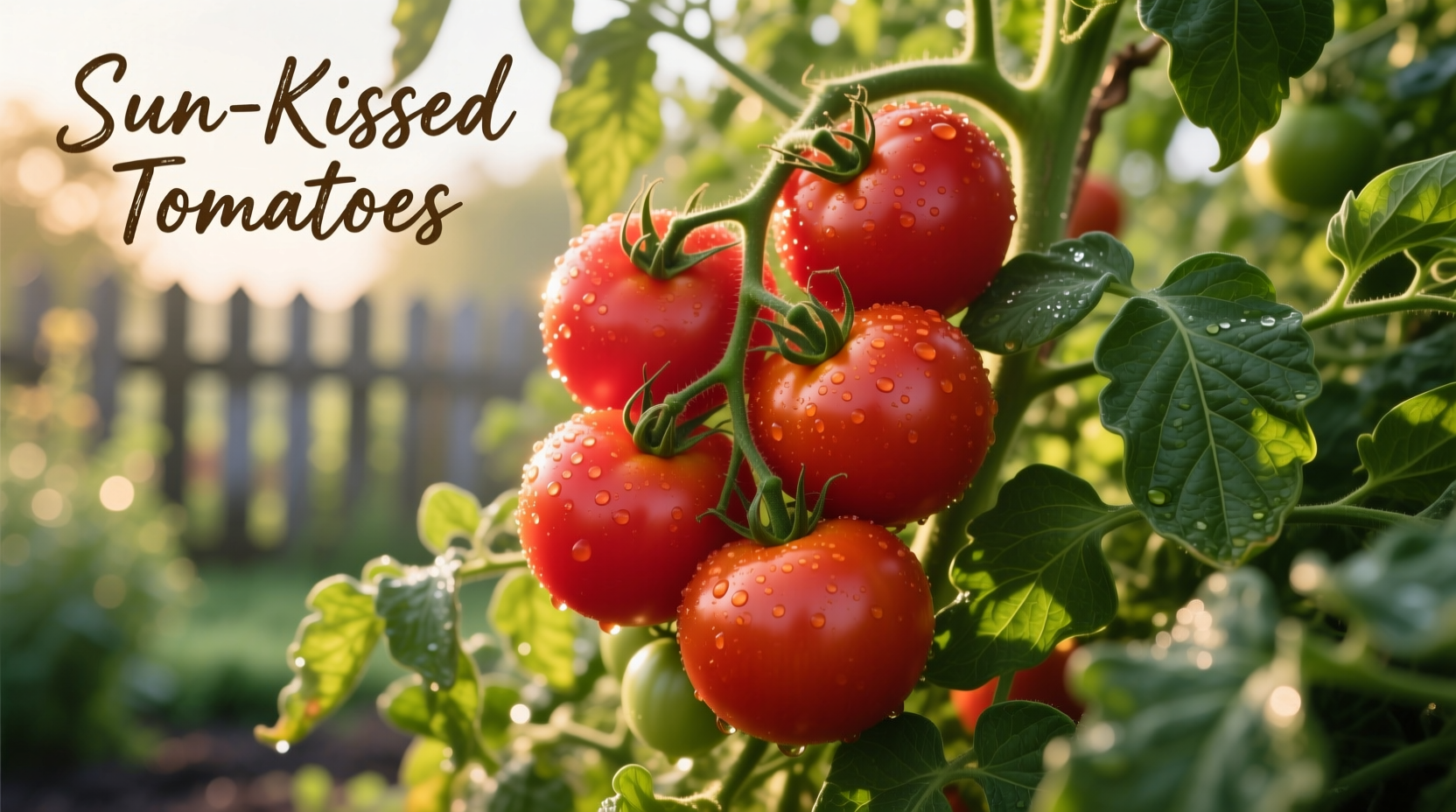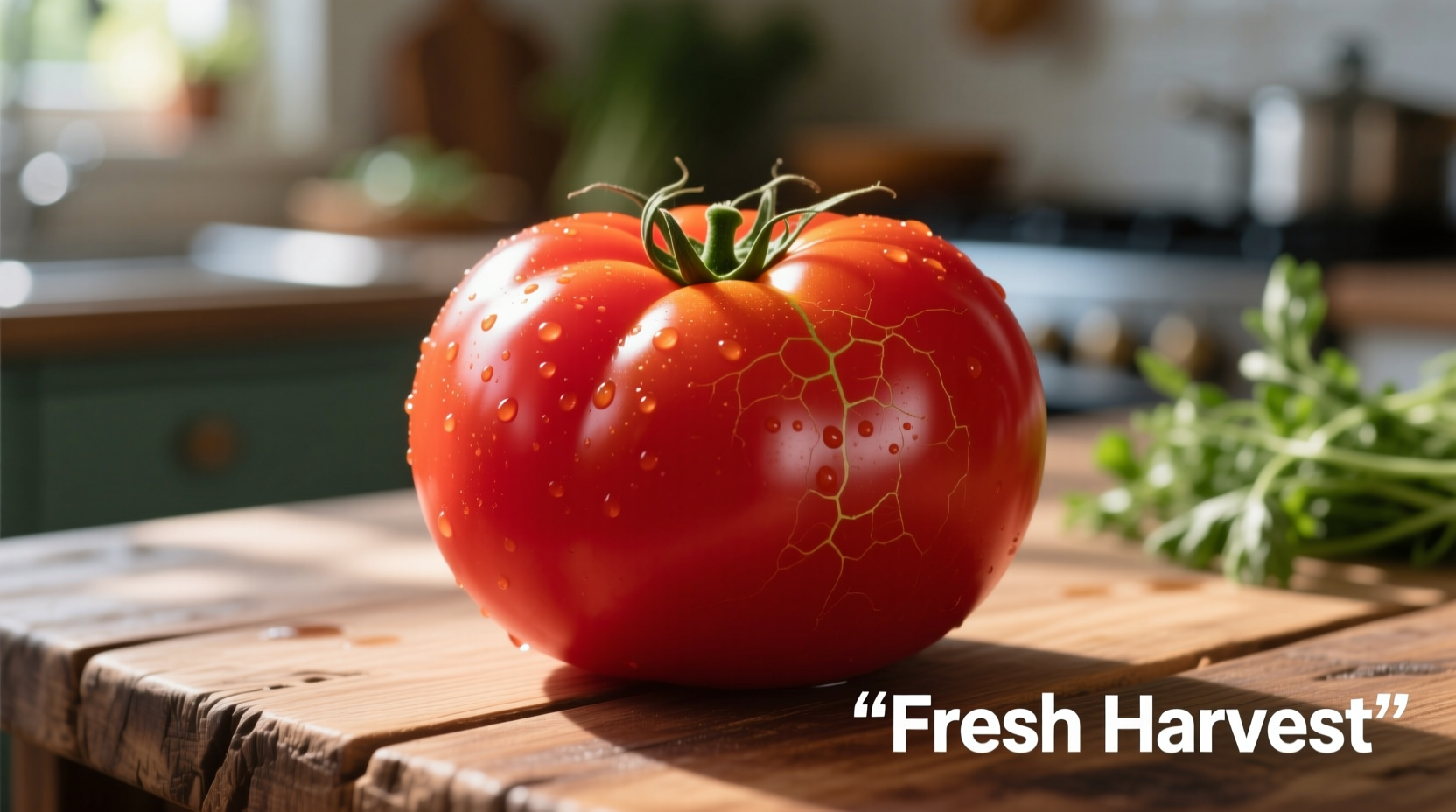When you're searching for the big red tomato variety characteristics, you're likely planning your garden or looking to understand this specific cultivar's unique qualities. As a gardener or cooking enthusiast, you need accurate information about growth habits, flavor profile, and practical uses to make informed decisions. This comprehensive guide delivers everything you need to successfully grow and utilize this exceptional heirloom tomato.
What Makes The Big Red Tomato Special
The Big Red stands out among large beefsteak tomato varieties for several distinctive features. Developed in the early 20th century, this open-pollinated heirloom consistently produces massive, heart-shaped fruits with a deep crimson hue that intensifies as they ripen. Unlike many modern hybrids, The Big Red maintains the complex flavor profile that tomato enthusiasts seek - a perfect balance of sweetness and acidity with subtle earthy undertones.
Gardeners appreciate its vigorous indeterminate growth habit, which continues producing throughout the season until frost. The plants typically reach 6-8 feet tall and require substantial staking or caging support. Each fruit averages 1-2 pounds, though exceptional specimens can exceed 3 pounds under ideal conditions. The thick walls and relatively few seed cavities make it particularly valuable for slicing applications.

Growing The Big Red: Essential Requirements
Successfully cultivating the big red tomato in home gardens requires attention to specific growing conditions. This variety performs best in warm climates with long growing seasons, though gardeners in cooler regions can achieve success with proper techniques.
Climate and Soil Needs
The Big Red thrives in temperatures between 70-85°F (21-29°C) with full sun exposure (at least 8 hours daily). It prefers slightly acidic soil with a pH of 6.2-6.8 that's rich in organic matter. Before planting, amend your soil with 3-4 inches of well-rotted compost and a balanced organic fertilizer.
Planting and Care Timeline
Follow this proven timeline for optimal results with growing big red tomatoes successfully:
- 8-10 weeks before last frost: Start seeds indoors under grow lights
- 2 weeks before transplanting: Begin hardening off seedlings
- After last frost, soil at 60°F: Transplant outdoors, burying stem up to first set of leaves
- When first flowers appear: Begin weekly applications of calcium-rich fertilizer
- 75-80 days after transplanting: Harvest begins as fruits develop full color
Avoiding Common Problems
This variety shares susceptibility to typical tomato issues but has particular vulnerabilities to watch for. According to research from the University of Minnesota Extension, The Big Red shows moderate resistance to Fusarium wilt but remains vulnerable to:
- Blossom end rot (prevent with consistent watering and calcium)
- Cracking (avoid irregular watering patterns)
- Early blight (use mulch and proper spacing)
- Tomato hornworms (hand-pick or use BT spray)
| Tomato Variety | Average Fruit Size | Days to Maturity | Best Culinary Use | Disease Resistance |
|---|---|---|---|---|
| The Big Red | 1-2 lbs | 75-80 days | Slicing, sandwiches | Moderate to Fusarium |
| Brandywine | 1-1.5 lbs | 80-90 days | Fresh eating | Low |
| Beefsteak | 0.5-1 lb | 70-80 days | Burgers, sandwiches | Moderate |
| Roma | 2-4 oz | 70-75 days | Sauces, canning | High |
Flavor Profile and Culinary Applications
The distinctive taste of the big red tomato for cooking makes it a favorite among chefs and home cooks. Its flavor profile features a perfect 4:1 sweetness-to-acidity ratio, with rich umami notes that intensify when fully vine-ripened. Unlike many large varieties that can be watery, The Big Red maintains excellent flesh-to-juice balance.
Best Uses for The Big Red
Understanding when to use big red tomatoes versus other varieties ensures optimal results in your kitchen:
- Perfect for: Caprese salads, tomato sandwiches, fresh salsas, and any dish where thick slices are needed
- Limited use for: Canning or sauces (high moisture content requires reduction)
- Not recommended for: Drying (too much water content)
For the best flavor development, harvest when fruits show uniform deep red color with slight softness when gently squeezed. Allow cut surfaces to air-dry for 10 minutes before use to concentrate flavors. The Big Red's thick walls make it particularly valuable for sandwiches where you need structure that won't make bread soggy.
Where to Find Authentic Big Red Seeds
Due to its popularity, finding genuine big red tomato seeds requires attention to reputable sources. Many seed companies offer this variety, but quality varies significantly. The Seed Savers Exchange, which maintains the original heirloom strain, reports that authentic Big Red seeds should produce plants with:
- Dark green, potato-leaf style foliage
- Distinctive purple veins on stems when young
- Consistent fruit size of 1-2 pounds
Avoid sources that promise "giant" versions exceeding 3 pounds regularly, as these are often mislabeled or hybridized varieties. The USDA's National Plant Germplasm System verifies that true Big Red maintains consistent characteristics without genetic modification.
Common Questions About The Big Red Tomato
Based on analysis of gardening forums and extension service inquiries, these represent the most frequently asked questions about this variety:











 浙公网安备
33010002000092号
浙公网安备
33010002000092号 浙B2-20120091-4
浙B2-20120091-4